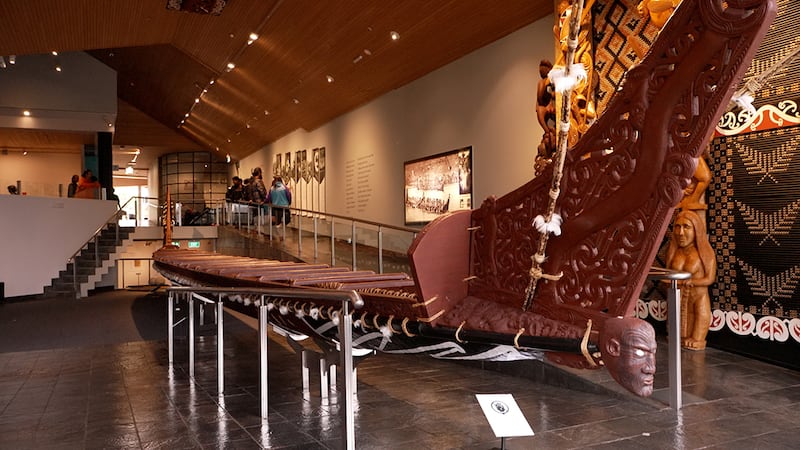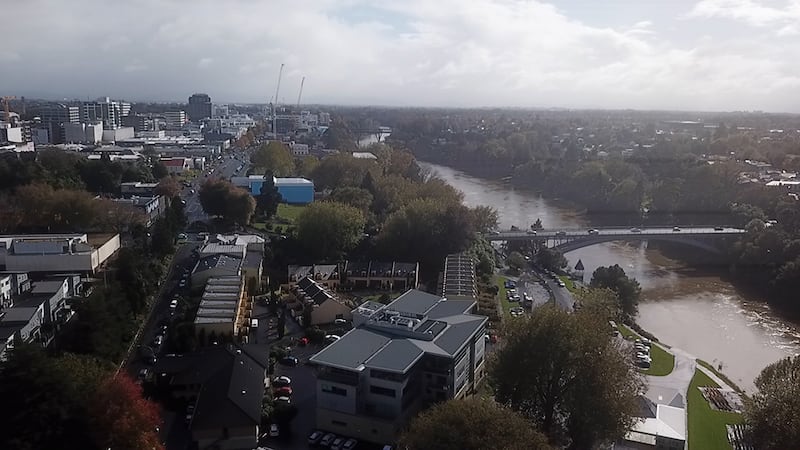Kurawaitī is a Māori environment programme aimed at connecting youth to the stories of the Waikato River. The Waikato Regional Council hopes it will encourage a new generation of guardians of the river and its environment.
Kurawaitī is part of a council environmental educational programme called Kurawaitī ki Kurawaitā (River Schools to Moana Schools).
The council has called on the waka and river expertise of Turanga Barclay- Kerr from Te Toki Voyaging Trust to lead the three-year funded programme (though with a vision to progress over 10 or more years and into the future).
The aim is to connect youth to the river, its stories and their ancestors, and aim to produce the next kaitiaki taiao for their ancestral Waikato River.
“We look deeply into water vessel knowledge, Māori knowledge around this, and the environment, to help and support our youth if perhaps some don’t have a relationship with their river. Perhaps they may become the future carers in the health and well-being of the river,” Barclay- Kerr said.

Taught in Māori
There are 12 schools taking part in Kurawaitī this year, six more than when it started last year. Kurawaitī is taught in total immersion te reo Māori with an outdoor teaching style when weather permits and,if not, in a building nestled on the shores of the Waikato River.
The students learn waka safety before going onto the awa and paddling if conditions are safe. They visit the Waikato Museum to learn about Tainui waka Te Winika and they learn waiata and purakau about the Waikato awa, Tainui waka and the Kīngitanga.
Kurawaitī runs in the heart of Kirikiriroa and each day of the week caters to two schools with nine students per time. Today first-year level 1 students from Te Kura Amorangi o Whakawātea and Te Whare Kura o Whakarewa ki te reo o Tuwharetoa were taking part. The schools take two levels of lessons.
Kids connecting to river
Rauroha Brown, a supporting parent from Te Whare Kura o Whakarewa ki te reo o Tuwharetoa, said, “Just some of the best things our kids love about being here are learning about the many facets of the Waikato River from its history, connecting them to it, its stories, and its past and present conditions and how they can help care for it”.
Last year the Waikato River Authority awarded over two million dollars to three Waikato Regional Council catchment-scale projects and its new Māori medium environmental educational programme to benefit the health and wellbeing of the Waikato and Waipā rivers.
Kaihapa Hotaka Mātauranga Arna Solomon-Banks says the programme came about because the Waikato Regional Council was looking for a meaningful way to support kura with environmental learning in a way that supported te reo, tikanga and mātauranga.
“Kurawaitī is about engaging our rangatahi in fun ways, hands on, on the awa, learning about the tikanga of waka and the mātauranga, the stories of the awa from the awa people, and sharing that reliving, " she said.
The programme aligns with giving effect to Te Ture Whaimana o Te Awa o Waikato - The Vision and Strategy for the Waikato River, the primary direction-setting document for the restoration and protection of the Waikato River.

Big job ahead for new kaitiaki
On the Waikato Regional Council website, under the heading ‘How clean is the Waikato River?’, it reports that the water quality in the Waikato River is much better than it was in the 1950s. Urban wastewater treatment has improved considerably.
However, it also says water quality in the Waikato River is not always good enough for swimming. It is safe to swim upstream of Hamilton City but levels of Escherichia coli (‘E. coli’) bacteria (an indicator of health risk) in the city reach and downstream were often above the safe level for swimming.
Higher bacteria levels in the lower river are the result of the combined discharges from farm and stormwater runoff, dairy farms and sewage treatment plants. Water quality in the lower river is not as good for plants and animals to live in as in the upper River.
Solomon- Banks says, “This is why Kurawaitī ki Kurawaitā is so important to prepare our rangatahi as future guardians over our waters'.
And Barclay- Kerr says, "If these students in Kurawaitī return to their schools, their families, their communities, and marae and take up the role of being a guardian over the environment of their rivers, this kaupapa will be a success".
Following on from the Kuarawaitī programme they will transition to Kurawaitā, Māori knowledge about ocean vessels, and the ocean’s environment in the endeavor to find future kaitiaki for these stretches of waters.


